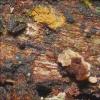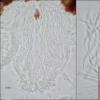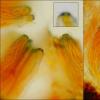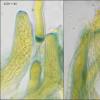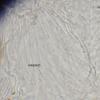
24-12-2025 17:08
Hulda Caroline HolteHello, I have found this propoloid ascomycete on

21-12-2025 09:32
Hello.A tiny ascomycete found embedded in wood in

21-12-2025 21:32
Pol DebaenstHello, Garden, Burgweg 19, Veurne, BelgiumOn 10/1

22-12-2025 23:38
Patrice TANCHAUDBonsoir, récolte sur un mur en pierre, apothéci

22-12-2025 00:47
Patrice TANCHAUDBonsoir, récolte à proximité du milieu dunaire
Apothecia inmersed, 0.4mm diameter. Hymenium light. Lobed margin. on hardwood.
Apex of paraphyses and asci are embedded in a gelatinous substance that keeps them together.
Asci 8-spored, 70-80 x 11-12um. With apical apparatus IKI visible (IKI +)
Spores cylindrical, up 72x2.7um, and 15 septa when mature. spirally arranged in the ascus.
Ectal Excipulo with prismatic texture (x3-6um), marginal cells 10-12 x 3-4um.
With the information that I have, I think it can be Karstenia, and as having apical apparatus: Karstenia guttulata.
I would like someone to confirm or reject this determination.
Greetings.
Susana

What I name rubrobrunnea-guttulata has straight spores. Yours are distinctly helicoid.
I fear I do not know this. You figure a detail auf the "excipulum", is it from the inner face of the marginal lobes? I suppose so, it is the periphyses that point horizontally to the hymenium.
Was it an attached branch?
Zotto
Photo excipulum take it in a bulk sample, no cutting, and I considered that was the excipulo. Now, I have noticed a cut and I could see that these terminal cells, are in contact with the hymenium, horizontally. (sent photo, although is not very good)
The branch that grew, was attached to the tree.
Susana

I must apologize, the right word is periphysoids, at least it is the term that Sherwood uses. In the dictionary periphysoids is used for pyrenomycetes, however, and also periphyses is there defined for perithecia, as elements lining the ostiolar canal and directed upwards. I am not really sure why Sherwood uses periphysoids here.
Zotto
Thanks for the info.
I can say that this is Karstenia sp. ? (undetermined)

As it was an attached branch, the whole tree was dead, or why you cannot say what host genus it was?
I checked the substrate. It was an attached dead branch. The whole tree is still alive, and it is a salix.
Regards

